
- Home
- Training Courses
- Certifications
- Cisco Certified Network Associate (CCNA)
200-301: Cisco Certified Network Associate (CCNA)
PDFs and exam guides are not so efficient, right? Prepare for your Cisco examination with our training course. The 200-301 course contains a complete batch of videos that will provide you with profound and thorough knowledge related to Cisco certification exam. Pass the Cisco 200-301 test with flying colors.

Curriculum for 200-301 Certification Video Course
| Name of Video | Time |
|---|---|
 1. Introduction |
1:00 |
| Name of Video | Time |
|---|---|
 1. How to Set Up the Lab Introduction |
1:00 |
 2. Cisco Packet Tracer Installation |
7:00 |
| Name of Video | Time |
|---|---|
 1. Introduction |
1:00 |
 2. A (Very) Basic Introduction to Networking |
6:00 |
 3. The OSI Reference Model Overview |
9:00 |
 4. The TCP/IP Stack |
5:00 |
 5. The Upper OSI Layers |
3:00 |
 6. The Lower OSI Layers |
5:00 |
| Name of Video | Time |
|---|---|
 1. Introduction |
1:00 |
 2. Cisco Operating Systems |
5:00 |
 3. Connecting to a Cisco Device over the network |
11:00 |
 4. Making the Initial Connection to a Cisco Device |
11:00 |
 5. Navigating the Cisco IOS Operating System Part 1 |
10:00 |
 6. Navigating the Cisco IOS Operating System Part 2 |
11:00 |
 7. Cisco IOS Configuration Management |
9:00 |
| Name of Video | Time |
|---|---|
 1. Introduction |
1:00 |
 2. The Transport Layer Header, TCP and UDP |
13:00 |
| Name of Video | Time |
|---|---|
 1. Introduction |
1:00 |
 2. The IP Header |
9:00 |
 3. Unicast, Broadcast and Multicast Traffic |
4:00 |
 4. How to Count in Binary |
9:00 |
 5. IPv4 Addresses |
8:00 |
 6. Calculating an IPv4 Address in Binary |
8:00 |
 7. The Subnet Mask |
11:00 |
 8. Slash Notation |
4:00 |
| Name of Video | Time |
|---|---|
 1. Introduction |
1:00 |
 2. Class A IP Addresses |
12:00 |
 3. IP Address Classes B and C |
4:00 |
 4. IP Address Classes D and E |
8:00 |
| Name of Video | Time |
|---|---|
 1. Introduction |
1:00 |
 2. CIDR Classless Inter-Domain Routing |
6:00 |
 3. Subnetting Overview |
10:00 |
 4. Subnetting Class C Networks and VLSM |
11:00 |
 5. Subnetting Practice Questions |
8:00 |
 6. Variable Length Subnet Masking Example Part 1 |
10:00 |
 7. Variable Length Subnet Masking Example Part 2 |
8:00 |
 8. Subnetting Large Networks Part 1 |
12:00 |
 9. Subnetting Large Networks Part 2 |
8:00 |
 10. Private IP Addresses Part 1 |
11:00 |
 11. Private IP Addresses Part 2 |
9:00 |
 12. Where to Get More Subnetting Practice |
3:00 |
| Name of Video | Time |
|---|---|
 1. Introduction |
1:00 |
 2. Local Area Network Layer 2 - Ethernet |
10:00 |
| Name of Video | Time |
|---|---|
 1. Introduction |
1:00 |
 2. Ethernet Connection Media |
13:00 |
| Name of Video | Time |
|---|---|
 1. Introduction |
1:00 |
 2. Switches vs Hubs |
5:00 |
 3. Switch Operation |
8:00 |
 4. Routers |
6:00 |
 5. Other Cisco Devices |
4:00 |
| Name of Video | Time |
|---|---|
 1. Introduction |
1:00 |
 2. DNS The Domain Name System |
6:00 |
 3. DNS on Cisco Routers |
7:00 |
 4. ARP Address Resolution Protocol |
8:00 |
 5. ARP for Routed Traffic |
9:00 |
 6. Life of a Packet Example Part 1 - DNS |
16:00 |
 7. Life of a Packet Example Part 2 - HTTP |
10:00 |
| Name of Video | Time |
|---|---|
 1. Introduction |
1:00 |
 2. The Cisco Troubleshooting Methodology |
10:00 |
 3. Cisco Troubleshooting Methodology - Lab Example |
7:00 |
| Name of Video | Time |
|---|---|
 1. Introduction |
1:00 |
 2. Basic Router and Switch Configuration |
13:00 |
 3. The Setup Wizard |
8:00 |
 4. Speed and Duplex Settings |
8:00 |
 5. CDP and LLDP |
9:00 |
 6. Basic Layer 1 and 2 Troubleshooting |
8:00 |
 7. Basic Layer 1 and 2 Troubleshooting - Lab Demo |
9:00 |
| Name of Video | Time |
|---|---|
 1. Introduction |
1:00 |
 2. The Boot Up Process |
7:00 |
 3. The Boot Up Process Lab Demo |
8:00 |
 4. Factory Reset and Password Recovery |
9:00 |
 5. Password Recovery Lab Demo |
9:00 |
 6. Backing up the System Image and Configuration |
8:00 |
 7. Upgrading IOS |
5:00 |
| Name of Video | Time |
|---|---|
 1. Introduction |
1:00 |
 2. Connected and Local Routes |
6:00 |
 3. Connected and Local Routes Lab Demo |
6:00 |
 4. Static Routes |
6:00 |
 5. Static Routes Lab Demo |
10:00 |
 6. Summarisation, Longest Prefix Match, and Default Routes |
10:00 |
 7. Summary Routes and Longest Prefix Match Lab Demo |
12:00 |
| Name of Video | Time |
|---|---|
 1. Introduction |
2:00 |
 2. Dynamic Routing Protocols vs Static Routes |
10:00 |
 3. Dynamic Routing Protocols Lab Demo |
7:00 |
 4. Routing Protocol Types |
7:00 |
 5. Routing Protocol Types Lab Demo |
7:00 |
 6. Routing Protocol Metrics |
15:00 |
 7. Routing Protocol Metrics Lab Demo |
15:00 |
 8. Equal Cost Multi Path |
4:00 |
 9. Equal Cost Multi Path Lab Demo |
11:00 |
 10. Administrative Distance |
10:00 |
 11. Administrative Distance Lab Demo |
8:00 |
 12. Loopback Interfaces |
9:00 |
 13. Adjacencies and Passive Interfaces |
7:00 |
 14. Adjacencies and Passive Interfaces Lab Demo |
7:00 |
| Name of Video | Time |
|---|---|
 1. Introduction |
1:00 |
 2. Basic Connectivity Troubleshooting |
13:00 |
| Name of Video | Time |
|---|---|
 1. Introduction |
1:00 |
 2. RIP the Routing Information Protocol |
13:00 |
 3. RIP Lab Demo |
14:00 |
 4. EIGRP - the Enhanced Interior Gateway Routing Protocol |
15:00 |
 5. EIGRP Lab Demo |
6:00 |
| Name of Video | Time |
|---|---|
 1. Introduction |
1:00 |
 2. OSPF Characteristics |
6:00 |
 3. OSPF Basic Configuration |
11:00 |
 4. OSPF Basic Configuration Lab Demo |
5:00 |
 5. OSPF Advanced Topics |
7:00 |
 6. OSPF Advanced Topics Lab Demo |
7:00 |
 7. Bandwidth vs Clock Rate and Speed |
5:00 |
 8. OSPF Cost Metric |
9:00 |
 9. OSPF Cost Metric Lab Demo |
8:00 |
 10. OSPF Adjacencies |
17:00 |
 11. OSPF DR and BDR Designated Routers |
11:00 |
 12. OSPF DR and BDR Lab Demo |
13:00 |
 13. OSPF Areas |
14:00 |
 14. OSPF Areas Lab Demo |
11:00 |
| Name of Video | Time |
|---|---|
 1. Introduction |
1:00 |
 2. Campus LAN Design - Core, Distribution and Access Layers |
8:00 |
 3. Spine-Leaf Network Design |
5:00 |
 4. Why we have VLANs |
10:00 |
 5. VLAN Access Ports |
7:00 |
 6. VLAN Access Ports Lab Demo |
8:00 |
 7. VLAN Trunk Ports |
16:00 |
 8. VLAN Trunk Ports Lab Demo |
13:00 |
 9. DTP Dynamic Trunking Protocol |
6:00 |
 10. VTP VLAN Trunking Protocol |
8:00 |
 11. VTP Lab Demo |
10:00 |
| Name of Video | Time |
|---|---|
 1. Introduction |
1:00 |
 2. Router with Separate Interfaces |
12:00 |
 3. Router on a Stick |
12:00 |
 4. Layer 3 Switch |
8:00 |
 5. Layer 3 Switch Lab Demo |
9:00 |
| Name of Video | Time |
|---|---|
 1. Introduction |
1:00 |
 2. DHCP Dynamic Host Configuration Protocol |
7:00 |
 3. Cisco DHCP Server |
7:00 |
 4. External DHCP Server |
5:00 |
 5. Windows, Mac and Linux client IP settings |
7:00 |
 6. Cisco DHCP Client |
5:00 |
| Name of Video | Time |
|---|---|
 1. Introduction |
2:00 |
 2. Network Redundancy |
9:00 |
 3. FHRP First Hop Redundancy Protocols |
7:00 |
 4. HSRP Hot Standby Router Protocol |
9:00 |
 5. HSRP Advanced Topics |
8:00 |
| Name of Video | Time |
|---|---|
 1. Introduction |
2:00 |
 2. Layer 3 Path Selection and Loop Prevention Review |
12:00 |
 3. Why we have the Spanning Tree Protocol |
13:00 |
 4. Spanning Tree Terminology - The Bridge |
3:00 |
 5. How Spanning Tree Works |
20:00 |
 6. Spanning Tree Versions |
8:00 |
 7. Verification - show spanning-tree |
11:00 |
 8. Verification - show mac address-table |
5:00 |
 9. Manipulating the Root Bridge Election |
7:00 |
 10. Spanning Tree and HSRP Alignment |
7:00 |
 11. Portfast, BPDU Guard and Root Guard |
7:00 |
| Name of Video | Time |
|---|---|
 1. Introduction |
1:00 |
 2. Why we have EtherChannel |
9:00 |
 3. EtherChannel Load Balancing |
5:00 |
 4. EtherChannel Protocols and Configuration |
10:00 |
 5. EtherChannel Lab Demo |
13:00 |
 6. StackWise, VSS and vPC |
8:00 |
 7. Layer 3 EtherChannel |
6:00 |
| Name of Video | Time |
|---|---|
 1. Introduction |
1:00 |
 2. DHCP Snooping |
6:00 |
 3. DAI Dynamic ARP Inspection |
8:00 |
 4. 802.1X Identity Based Networking |
3:00 |
 5. Preventing Unauthorised Devices with Port Security |
11:00 |
 6. Preventing Unauthorised Devices with Port Security Lab Demo |
8:00 |
 7. Locking Ports to Hosts with Port Security |
6:00 |
 8. Locking Ports to Hosts with Port Security Lab Demo |
11:00 |
| Name of Video | Time |
|---|---|
 1. Introduction |
4:00 |
 2. Access Control Lists Overview |
4:00 |
 3. Standard, Extended and Named ACLs |
11:00 |
 4. ACL Syntax |
10:00 |
 5. ACL Operations |
15:00 |
 6. Numbered ACLs Lab Demo |
14:00 |
 7. Named ACLs Lab Demo |
10:00 |
| Name of Video | Time |
|---|---|
 1. Introduction |
2:00 |
 2. IPv4 Address Exhaustion and NAT |
8:00 |
 3. Static NAT |
7:00 |
 4. NAT Translations - Inside Local, Inside Global, Outside Local, Outside Global |
10:00 |
 5. Static NAT Lab Demo |
8:00 |
 6. Dynamic NAT |
9:00 |
 7. Dynamic NAT Lab Demo |
8:00 |
 8. PAT Port Address Translation |
14:00 |
 9. PAT Port Address Translation Lab Demo |
7:00 |
| Name of Video | Time |
|---|---|
 1. Introduction |
1:00 |
 2. Why We Need IPv6 |
10:00 |
 3. The IPv6 Address Format |
8:00 |
 4. IPv6 Global Unicast Addresses |
10:00 |
 5. IPv6 Global Unicast Addresses Lab Demo |
8:00 |
 6. EUI-64 Addresses |
9:00 |
 7. Unique Local and Link Local Addresses |
11:00 |
 8. Link Local Addresses Lab Demo |
7:00 |
 9. SLAAC Stateless Address AutoConfiguration |
10:00 |
 10. IPv6 Static Routes |
14:00 |
 11. IPv6 Static Routes Lab Demo |
18:00 |
| Name of Video | Time |
|---|---|
 1. Introduction |
1:00 |
 2. WAN Overview |
5:00 |
 3. VPN - Virtual Private Networks |
10:00 |
 4. WAN Connectivity Options |
12:00 |
 5. Leased Lines |
10:00 |
 6. MPLS Multi Protocol Label Switching |
12:00 |
 7. PPPoE Point to Point Protocol over Ethernet |
4:00 |
 8. WAN Topology Options |
6:00 |
| Name of Video | Time |
|---|---|
 1. Introduction |
1:00 |
 2. The Security Threat Landscape |
14:00 |
 3. Common Attacks |
18:00 |
 4. Firewalls and IDS/IPS |
10:00 |
 5. Firewalls vs Packet Filters |
14:00 |
 6. Cryptography |
13:00 |
 7. TLS Transport Layer Security |
14:00 |
 8. Site-to-Site VPN Virtual Private Networks |
16:00 |
 9. Remote Access VPN Virtual Private Networks |
5:00 |
 10. Threat Defense Solutions |
17:00 |
| Name of Video | Time |
|---|---|
 1. Introduction |
1:00 |
 2. Line Level Security |
14:00 |
 3. Privileged Exec and Password Encryption |
5:00 |
 4. Line Level Security Lab Demo |
10:00 |
 5. Usernames and Privilege Levels |
11:00 |
 6. SSH Secure Shell |
5:00 |
 7. SSH Secure Shell Lab Demo |
6:00 |
 8. AAA Authentication, Authorization and Accounting |
12:00 |
 9. AAA Configuration |
9:00 |
 10. Global Security Best Practices |
10:00 |
 11. Global Security Best Practices Lab Demo |
5:00 |
| Name of Video | Time |
|---|---|
 1. Introduction |
1:00 |
 2. Syslog |
15:00 |
 3. Terminal Monitor and Logging Synchronous |
6:00 |
 4. Syslog Lab Demo |
6:00 |
 5. SNMP Simple Network Management Protocol |
9:00 |
 6. SNMP Lab Demo |
4:00 |
 7. SNMPv3 Configuration |
10:00 |
 8. SNMPv3 Lab Demo |
7:00 |
 9. Syslog vs SNMP |
6:00 |
| Name of Video | Time |
|---|---|
 1. Introduction |
1:00 |
 2. QoS Overview |
19:00 |
 3. Classification and Marking |
14:00 |
 4. Congestion Management |
11:00 |
 5. Policing and Shaping |
13:00 |
| Name of Video | Time |
|---|---|
 1. Introduction |
1:00 |
 2. Traditional IT Deployment Models |
6:00 |
 3. Defining Cloud Computing |
7:00 |
 4. Cloud Computing Case Study |
14:00 |
 5. Server Virtualization |
13:00 |
 6. Virtualizing Network Devices |
14:00 |
 7. Cloud Service Models |
11:00 |
 8. Cloud Deployment Models |
11:00 |
 9. Cloud Computing Advantages |
9:00 |
| Name of Video | Time |
|---|---|
 1. Introduction |
1:00 |
 2. Wireless Network Types |
7:00 |
 3. Infrastructure Mode and Wireless Access Points |
6:00 |
 4. Wireless LAN Controllers and CAPWAP |
14:00 |
 5. Switch Configuration for Wireless Networks |
10:00 |
 6. Wireless Channels and Radio Frequencies |
13:00 |
 7. Wireless Security |
6:00 |
 8. Switch Configuration for Wireless - Lab Demo |
15:00 |
 9. Wireless Network Configuration - Lab Demo |
20:00 |
| Name of Video | Time |
|---|---|
 1. Introduction |
3:00 |
 2. The Benefits of Network Automation and Programmability |
12:00 |
 3. Python, Git, GitHub and CI-CD |
6:00 |
 4. Data Serialization Formats: XML, JSON and YAML |
14:00 |
 5. APIs - CRUD, REST and SOAP |
13:00 |
 6. Model Driven Programmability - YANG, NETCONF, RESTCONF and gRPC |
11:00 |
 7. Lab Demo - Testing APIs with Postman |
12:00 |
 8. Configuration Management Tools - Ansible, Puppet and Chef |
8:00 |
 9. Ansible Lab Demo |
17:00 |
 10. SDN Software Defined Networking |
10:00 |
 11. Software Defined Architecture - DNA Center |
20:00 |
 12. Software Defined Architecture - SD-Access |
10:00 |
 13. Software Defined Architecture - SD-WAN |
12:00 |
Cisco CCNA 200-301 Exam Dumps, Practice Test Questions
100% Latest & Updated Cisco CCNA 200-301 Practice Test Questions, Exam Dumps & Verified Answers!
30 Days Free Updates, Instant Download!
200-301 Premium Bundle

- Premium File: 557 Questions & Answers. Last update: Apr 1, 2025
- Training Course: 271 Video Lectures
- Study Guide: 1969 Pages
- Latest Questions
- 100% Accurate Answers
- Fast Exam Updates
Free 200-301 Exam Questions & 200-301 Dumps
| File Name | Size | Votes |
|---|---|---|
File Name cisco.pass4sure.200-301.v2025-03-14.by.gabriel.273q.vce |
Size 6.38 MB |
Votes 1 |
File Name cisco.realtests.200-301.v2021-12-17.by.martin.257q.vce |
Size 7.07 MB |
Votes 1 |
File Name cisco.real-exams.200-301.v2021-11-05.by.sophia.273q.vce |
Size 6.38 MB |
Votes 1 |
File Name cisco.real-exams.200-301.v2021-07-27.by.sophia.244q.vce |
Size 6.99 MB |
Votes 1 |
File Name cisco.passcertification.200-301.v2021-05-15.by.leon.225q.vce |
Size 7.03 MB |
Votes 1 |
File Name cisco.selftestengine.200-301.v2021-01-28.by.freya.208q.vce |
Size 7.26 MB |
Votes 2 |
File Name cisco.prep4sure.200-301.v2020-12-04.by.william.186q.vce |
Size 6.24 MB |
Votes 2 |
Cisco 200-301 Training Course
Want verified and proven knowledge for Cisco Certified Network Associate (CCNA)? Believe it's easy when you have ExamSnap's Cisco Certified Network Associate (CCNA) certification video training course by your side which along with our Cisco 200-301 Exam Dumps & Practice Test questions provide a complete solution to pass your exam Read More.
Cisco Device Functions
1. Introduction
In this section you'll learn about the basics of the different Cisco devices that are available. We'll cover hubs and switches, how they are similar to each other, and the differences before we move on to routers, and how routers compare to your switches. And then finally, I'll cover the different platforms that are available that aren't really covered in the routing and switching tracks, such as firewalls, land controllers, telepresence, etc. So the information that we're going to cover is going to give you the foundation that you need before learning the more advanced topics on the devices in the later sections.
2. Switches vs Hubs
In this lecture, you'll learn about the basics of hubs and switches, and I'll do a comparison between the two. The functions of hubs and switches are very similar. You take your end hosts in your local area network, like your PCs, your servers, and your printers, and you plug them into a hub or a switch with an Ethernet cable. And those end hosts are then able to communicate with each other through the Hub orbit switch. In the picture here, we've got a Cisco 2960 catalyst switch. It's a 48-port model. So obviously, you could plug in a maximum of 48 hosts into that switch. But what if you've got more than 48 hosts on your campus, which you probably will have? Well, in that case, you're going to have multiple switches in your local area network, and your switches will be connected to each other via Ethernet cables, again via inner switch links. So I said we were going to compare hubs and switches. We'll have a look at hubs first. Hubs always operate in half-duplex mode. That means that the attached host can either send or receive data.
They can't do both at the same time. All of the hosts that are plugged into that hub share the same collision domain, meaning that only one device can transmit at a time. If two devices do transmit at the same time, then they will detect that, back off, and then retransmit to make sure that there's not another collision. Again, the method that is used for detecting and recovering from collisions is CSME CD, which stands for Carrier Sensor Multiple Access with Collision Detection. Okay, so hubs have duplex and a shared collision domain with switches. On the other hand, they can operate in either full duplex or half duplex mode, and in practice, they're always going to operate in full duplex mode because that's much more efficient. When they are operating in full duplex, the attached hosts can both send and receive data at the same time using their receive and transmit wires. Also, all hosts have their own dedicated collision domain. So because of that, we're not going to have collisions. A collision detection mechanism is not required. Looking at the OSI stack, switches operate at layer two. Our hubs operate at layer one. So hubs, they're not Mac address aware. And whenever a frame is received on a port, it's flooded out to all the other ports apart from the one that it was received on. And because of that, all hosts that are plugged in there are going to receive the frame, so they're going to have to process it, at least as far as seeing that it's not for them. Switches, however, operate at layer two of the OSI model. They also operate on layer one. Obviously, we've got physical parts on there. This means that switches are Mac address aware.
Whenever a frame is received, the switch will look at the source Mac address in the layer to Ethernet header, and it will learn that Mac address. It will then add that Mac address to its Misaddress table, which is a mapping between the Mac address and the port that it is reachable on. If a unicast frame is later received where that Mac address is the destination, the switch will only send out the relevant port. Unlike a hub that floods out everywhere, this is better for performance and security, as frames only go where they are required. Whenever a frame is received for the broadcast addressor an unknown unicast address, it will be known only because the switch hasn't learned about it yet. It will be flooded out in all parts apart from the one it was received on. Okay, so that was the basics of hub and switch and the difference between them. We'll be having a look at switches in a lot more detail as we go through the other sections of the course. We're not really going to talk about hubs anymore because hubs aren't used anymore. Back in the day, like 15 years ago, hubs were commonly used because switches were very expensive. Switches have come down in price so much now, though, that you can't even buy hubs anymore. Switches are always used.
3. Switch Operation
In the last lecture, you learned that switches that function at layer two of the OSI stack learn Mac addresses and use that information to populate the Mac address table, which is a mapping of the Mac address to the port that it is reachable on. In this lecture, we're going to take a look at how that works in a bit more detail with an example. So we've got one switch here. We've got a host with a Mac address one plugged into part one. I've just written it in shorthand. One of them is shown below. To keep things a bit more simple, two twos are plugged into part two and three threes are plugged into part three. Right now, we've just powered everything on, so there's nothing in the Mac address table yet. Then the host on the left, one, sends an frame in with the destination Mac address of two two. So the switch will see that it sees a frame coming in with the source Mac of one and the destination Mac of two. So it learns that one is reachable on part one and it puts that information into the Mac address table. The destination of two is not in the Misaddress table yet, so it's an unknown unicast address. So the switch will flood it out, all parts apart from the one it was received on. So that will be sent out in parts two and three, which will be received by both hosts.
The host three dots three dots three will see that the destination Mac address is two dots two dots two. That's not it. So it will just silently discard the frame. The host of two, in our example, is going to send some traffic back. So it sends a reply from the source Mac of two itself to the destination Mac address of one, which will hit the switch again. The switch will see that traffic has come from a source of two and that it came from part two. So it will put that information into its Mac address table. It will then send the frame out only part because it sees that the destination Mac address is one and it knows that it's available on port one. So it sends it out only to that port. Okay, so that was how traffic works with a single switch. Now we're going to look at another example where we've got two switches. So switch one has got host one plugged in, one plugged in and two plugged in, part two. And switch two has hosts three and three connected to part one and four and four connected to part two. And the two switches are connected to each other using part 24 on both switches. Again, we've just powered everything on. So there's nothing in the Mac address table on either switch yet. Then host one sends a freeman with a destination mac address of two. Switch one will learn that one is available on part one and it will put that information into its Mac address table. It will then flood the frame out of all parts because it's an unknown unicast, it doesn't know where two two are yet. So that will get sent out for both parts two and part 24. When it comes to switching two Switching two will do the same thing. It will flood out all the parts. So that will be sent out as part one and part two as well. The host three dot three and four dot four will see that the destination Mac address is two dot two two dot.
That's not for them. So they will silently drop the packet. While that is happening, switch to will update its Mac address table because it learned that one was reachable through port 24 because that's the part that the frame came in on. The frame will have reached two. In our example, Again, it's going to send some return traffic, so that will hit switch one with a source Mac of two and a destination Mac address of one one. Switch one will update its Mac address table with the entry for two two to say it's reachable on part two. Switch one will then forward the frame outpart one because it already knows that the Macaddress of one is reachable through there. It's in its Mac address table. Notice that the frame does not get sent down to switch now because switch one knows that it should go out only on part one. The next thing that happens is that we're going to have some different traffic. So now the source of three three sends a frame to the destination Mac address of two dot two dot two that it has switched to, and it will update its Mac address table to say that host three three is reachable on part one. Switch two will then forward that frameout to all ports because the destination macaddress was two dot two dot two.
And it doesn't have that in its Mac address table. So it's an unknown unicast. It will send it everywhere. That will hit switch one. And switch one will see the frame arriving on port 24 that came with a source Mac address of three three. So it will put that information in its Mac address table. It will then send the frame out part two to the destination of part two because it already had that in its Mac address table. It just sends that one relevant part. Then host two-two sends some return traffic to the destination Mac address at three-and that hits switch one. Switch one does have three digits in its Mac address table. It sees that it's reachable through part 24, so it sends out just that part. The traffic will then hit switch to switch to see traffic coming in from a source MAC address of two on port 24. So it will update its Misaddress table with that information. It will then forward the frame out port one only because it knows that three out of three are available at that point. And if you look at the Mac address table for now, you can see that one and two two are both reachable on part 24. And this is what you'll see in normal practice as well, where a switch has got a single end host plugged into it on a port, and it will just have that one-man address on that port in its Mac address table. But where a switch is connected to another switch, you'll see, there will be multiple Mac addresses reachable on that part. Okay, that's it. That's what I wanted to show you. There. You now know how switch operation works, both for a single switch and in a multi-switched campus.
4. Routers
In this lecture, you'll learn about the basic operations of routers and how they compare to switches. Routers, route. That's why they're called routers. And what that means is that they can direct traffic between your different IP subnets. They're required to do that. To be able to route traffic from one IP subnet to another, you're going to need a router to be able to do that. So the route traffic between our different IP subnets is IP is layer three of the OSI stack. So a router operates at layer three of the OSI model. Obviously it has physical interfaces on there as well, so it's also operating at layer one. It also needs to understand layer two addresses, since it also operates at layer two as well. And routers will actually be aware of up to layer seven for advanced functions as well. But when they're doing the job of routing between different IP subnets, they're operating at layer three. So routers are termed layer-three devices to compare them with switches. Routers are layer three aware and can route traffic between different networks. We're layer two aware.
We're not layer three aware and can switch traffic between hosts on the local area network. Routers support many different types of interfaces, such as Ethernet, serial, ISDN, and ADSL. Switches will typically only support Ethernet interfaces. Switches will typically have a lot more ports than routers and switches will forward broadcast traffic. Routers, don't forget to broadcast traffic by default. So let's go back a slide. A couple of the things that I said are that the routers support many more types of parts and switches and will usually have fewer available parts and switches. So if you remember, we had a look at the Cisco catalyst 29-60 switch, which had 48 parts when we did the basics of switches. So it had 48 ports plus some uplinks there, and they were all Ethernet ports. If you have a look at the picture here, this is a Cisco 2800 series router, and it's only got two built-in Ethernet ports. You see, there are four parts there, but one of them is a console port and the other one is an auxiliary port. So it only comes with two Ethernet ports compared to our 48 ports, which we had to look at earlier. But if you look to the right of those parts, you see that there are modular slots there. So we can buy different types of interfaces such as ADSL, Ethernet, et cetera, serial ports, and we can put them into the router.
Okay, moving on, let's have a quick recap of the switch operation. So in the diagram here, you can see we've got a building, we've got a couple of switches in there. All our hosts are on the 1010 O 24 network. When that's the case, they can communicate with each other through our switches. When we're all on the same IP subnet, there’s no need to have a router there. But if one of those hosts had the IP address 1010111024, it's now on a different IP subnet and it's not going to be able to communicate with the other hosts on the 1010 network if we only have switches there. It's in another layer three network. So we need a layer three device, a router, to be able to route traffic between those hosts. So we put a router into the infrastructure.
Now, it's aware of the 1010 and the ten1011 networks, and it's going to be able to route traffic between all the hosts on the network. Now, okay, one other thing to tell you about here is that you can get advanced switches, which are layer three aware and can route traffic between different IP subnets. When you get one of those layer three aware switches, it's known as a layer three switch. It still has a lot of characteristics that are similar to a normal switch, though, in that it typically only supports Ethernet interfaces and it usually has more parts than routers. So looking at our diagram again now, you see that we only have switches in the network infrastructure, but the switch at the bottom is a layer three switch, meaning it is layer three aware. It's aware of the 1010 network and the ten 1011 networks and it's able to route traffic between them. You can actually do this on a catalyst29 60, like you saw earlier. Again, way back in the day, layer three switches were expensive, but they've come down in price now. As a result, layer three switches are commonly used to route traffic between subnets on a local area network. However, if your connection outside that campus out to the wide area network is using an interface type that is not Ethernet, then you would still require a normal, traditional router for that traffic as well.
5. Other Cisco Devices
In this lecture you'll learn about the other main product offerings that Cisco has other than their routers and switches. The Cisco Firewall is the ASA, which is the Adaptive Security Appliance, and you can see a picture of one of those here. The IPS, the intrusion prevention system from Cisco, is the source Fire Firepower IPS that can be bought as an appliance or, more commonly now, it will be either a software or a hardware module that lives inside the ASA Firewall. Cisco also makes wireless products as well. They have wireless LAN controllers that you can see on the left here and wireless access points that you can see on the right. The reason that they have wireless LAN controllers is that you get better scalability when you deploy those rather than having just lots of standalone wireless access points for collaboration. Unified Communications Manager from Cisco That is a software product that is an IP-based PBX. So it replaces traditional PBX's private branch exchanges, which controlled the phones that you would see in buildings a long time ago. A lot of modern companies are still using traditional PBXs, but IP PBXs are getting more and more popular. Cisco's Unified Communications Manager is one of the most popular IP PBXs that are available.
If you are going to be using the Cisco UCM to control your phones, you're also going to have IP phones on your desk. So Cisco produced those as well. You can see a picture of a typical Cisco IP phone on the left here. Cisco also does high-end, high-definition video conferencing systems. That's Cisco Telepresence, and you can see a picture of one of the available Telepresence models on the right of the picture. Another really popular product that Cisco has is Cisco WebEx, which is used for meetings. Finally, there's also a data center. You can see a picture of the UCS Blade server on the right here. UCS stands for Unified Computing System, as well as the Blade server that you see here. Cisco also has standard rackmount servers as well. So with the UCS, Cisco moved into offering compute as well, where you can actually run your servers directly on Cisco hardware. The other main product that Cisco has for the data center market is the Nexus switches. These are very similar to the standard Cisco switches which run the iOS software. They perform the same function, but these are typically higher-end switches that run the Naxos software instead. However, the commands in Naxos and iOS are very similar. So after you've learned the information on switching in this course, you can pretty easily take those skills across to the data center as well.
Prepared by Top Experts, the top IT Trainers ensure that when it comes to your IT exam prep and you can count on ExamSnap Cisco Certified Network Associate (CCNA) certification video training course that goes in line with the corresponding Cisco 200-301 exam dumps, study guide, and practice test questions & answers.
Comments (15)
Please post your comments about 200-301 Exams. Don't share your email address asking for 200-301 braindumps or 200-301 exam pdf files.
Purchase Individually




Cisco Training Courses
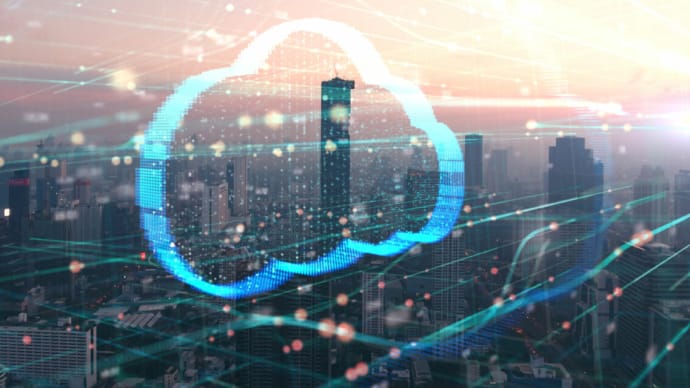
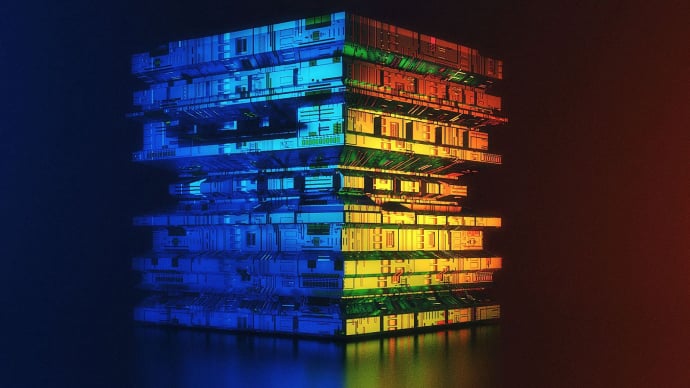


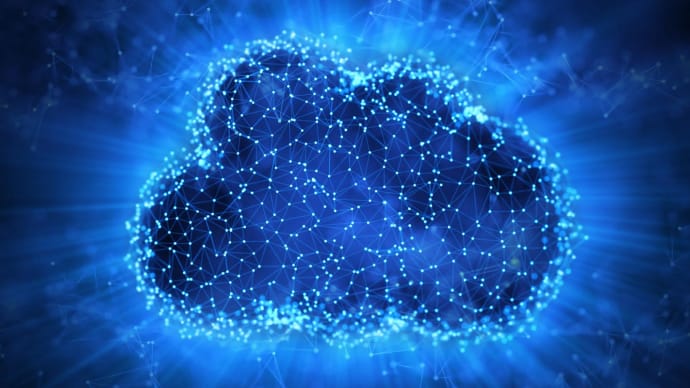
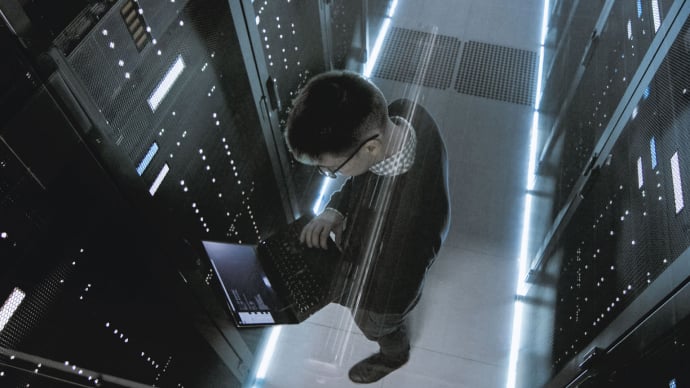
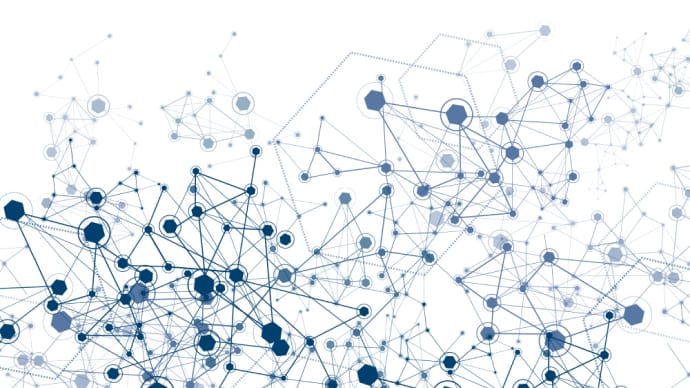
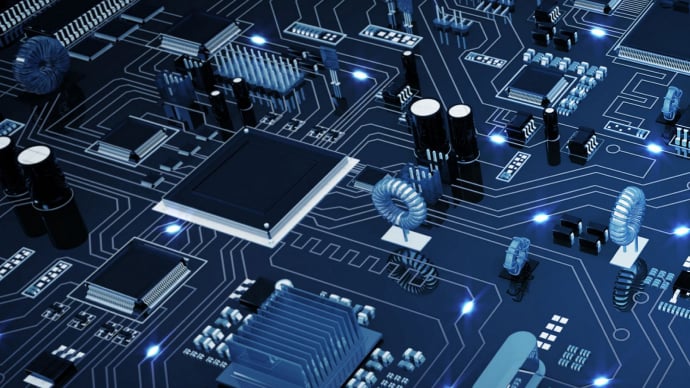
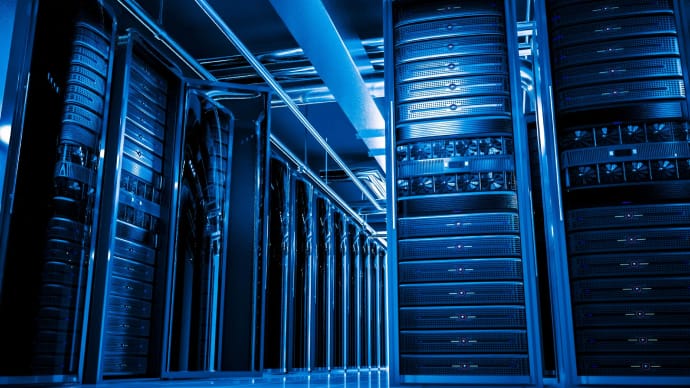
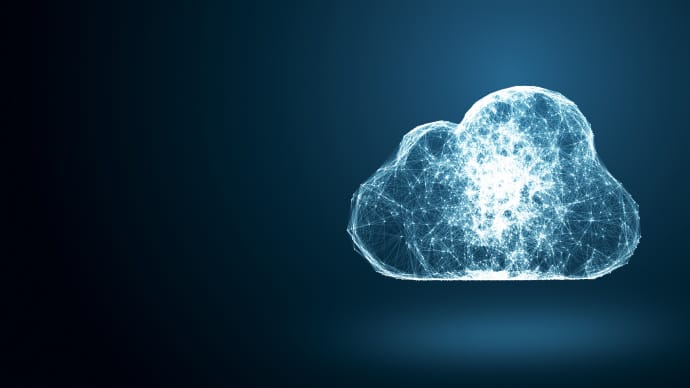
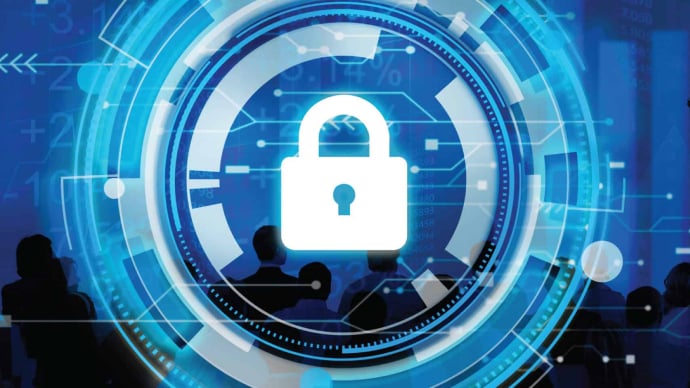
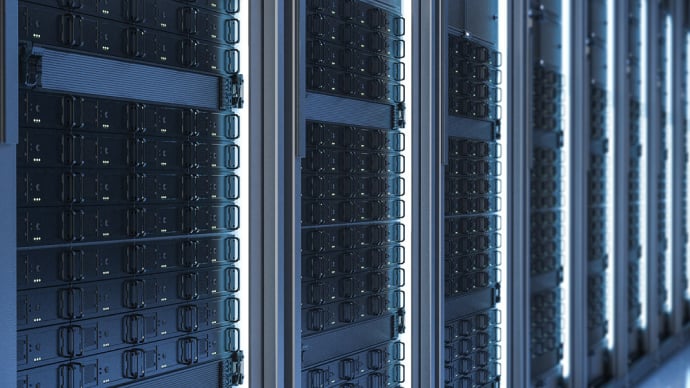


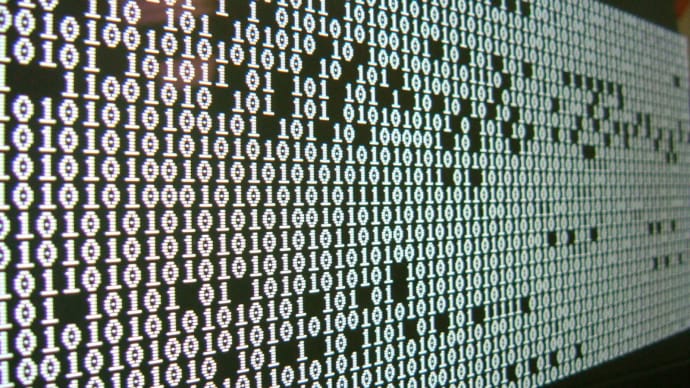





Only Registered Members can View Training Courses
Please fill out your email address below in order to view Training Courses. Registration is Free and Easy, You Simply need to provide an email address.
- Trusted by 1.2M IT Certification Candidates Every Month
- Hundreds Hours of Videos
- Instant download After Registration
Latest IT Certification News
- Cisco CCNP Enterprise 300-420 ENSLD - SD Access Fabric Design Part 2
- Amazon AWS DevOps Engineer Professional - Configuration Management and Infrastructure Part 9
- VMware VCAP6-NV 3V0-643 – Introduction
- CompTIA IT Fundamentals FC0-U61 - IT Security Threat Mitigation
- SY0-501 Section 1.1- Implement security configuration parameters on network devices and other technologies.
- Google Professional Data Engineer - Dataflow ~ Apache Beam Part 2
- SY0-501 Section 3.1 Explain types of malware.
- Basic CompTIA Certifications for you
- Best Cisco Security Certifications In 2018
- ISACA CRISC - IT Risk Assessment
- MB-310 Microsoft Dynamics 365 - Financial Dimensions and Account structures
- Tips To Write A Perfect CV
- SY0-501 Section 4.1-Explain the importance of application security controls and techniques.
- Explore the Best Computer Jobs to Take Your First Step into the Future







Whether you believe of this 200-105 video course, the course design as well as the instructor. Each and everything has a single word, SUPERB! I am really grateful to the instructor for this video course and his special guidelines which helped me in passing this exam.
Although the exam is challenging, information provided by the tutor was quite helpful. The tutor went a step forward to give handouts thus enabling me to attain excellent scores in my exam.
Backing up and Restoring a Cisco Configuration:
This lecture was so important because we sometimes configure our Cisco the all of a sudden the configuration is lost, this feature will help us restore and make everything as it was!
just got my ICND2 certification and your video course had been the great helper for me. I just loved the approach the instructor taught the entire thing compressively with simple English language. Your video course actually provides a new hope to individuals looking to work in networking field.
Laz was a great tutor. He was concise and straight to the point. Unlike some tutors that provide information on topics that are least beneficial to the course, Laz provided the information that was tested in the exam.
Monitoring Your Network:
I have not only known how to monitor my network but also the reason why I monitor. For so long I have been doing this but I have never known the concept behind it.
satisfactory explanation, comprehensive video lectures, query answers, and what not is provided by this Cisco 200-105 video course! the video lectures were actually impressive in all aspects. they really escalated the standard of learning for this exam. thanks for helping me!
the best course for an individual working in a networking firm. I was able to tackle various issues that I used to leave for professionals earlier on, and now I can call myself a professional in networking.
the course is very informative. it explains the information very well. I would have liked to see more labs and a little bit more on certain topics. it’s a great overall course for someone that is just getting started.
the cert course 200-105 initially looked difficult for me. it was one of my peers who recommended me to get through your video course modules and other preparation techniques provided by your instructor. his way of illustrating things have been the core attraction to choose your video course for getting certified as a 200-105 professional.
Elaborate course that builds one's knowledge from scratch. Without prior experience of routing and switching, I was able to cover the exam successfully and score amazing grades. Looking to tackle more Cisco certification to be a professional in networking.
I have already done this course online but I did not get what I was looking for there. I do not regret doing this course because it has equipped me with what I have been looking for all this long.
what caught my consideration were the interactive lab simulations, step by step lectures preparations for the respective 200-105 exam, brief particulars regarding exam objectives as well as your instructor’s way of teaching. all these are certainly satisfactory to deal with complex Cisco 200-105 question paper. will give you a try again!
great course! Lazaro is a great instructor and can give you everything you need to pass the exam. you only need to be active while you are watching these videos if you want to be ready to get the exam.
to be honest, the coursework was a bit challenging for me. however, Laz was supportive and aided me in areas I was stuck. amazingly, I scored a good grade in the examination thus proof that Laz provided me with vital information needed in routing and switching.